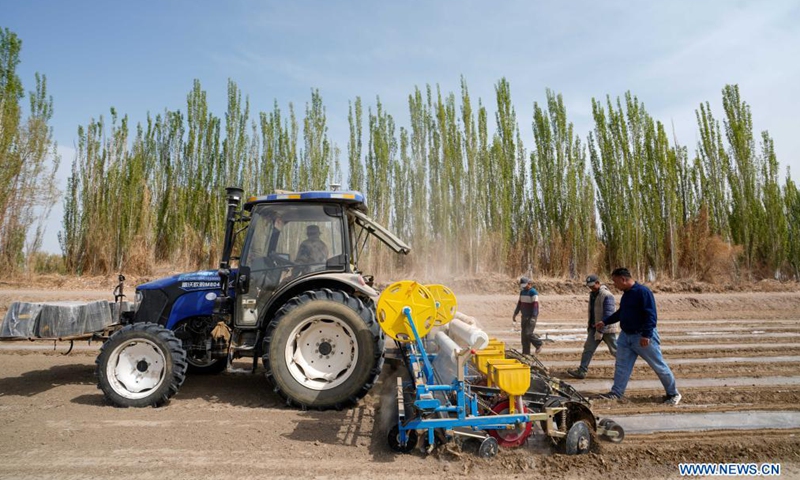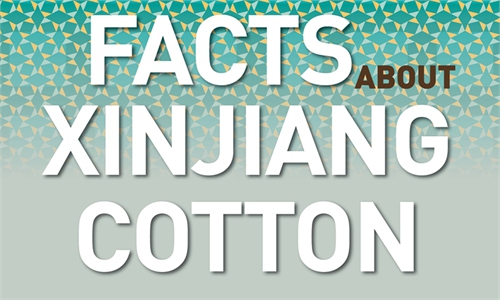
Cotton farmer Dilshat Memet (1st R) and employees have a discussion on film mulching sower efficiency in a cotton field in Tungqeka Village of Xingping Township, Yuli County, Bayingolin Mongolian Autonomous Prefecture, northwest China's Xinjiang Uygur Autonomous Region, April 13, 2021. Photo:Xinhua
The regional GDP of Northwest China's Xinjiang Uygur Autonomous Region grew 12.1 percent year-on-year to about 340.25 billion yuan ($52.43 billion) in the first quarter of 2021, showing an upward start for the whole year, data from local statistics bureau showed on Monday.
The added value of the region's primary industry reached about 12.6 billion yuan, up 3.2 percent year-on-year, while that of the secondary industry reached some 131.7 billion yuan, an annual increase of 16.8 percent. Added value of the tertiary industry, which accounts for nearly 60 percent of Xinjiang's economic output, increased by 9.9 percent to 196 billion yuan.
A total of 37 industries out of 40 industrial sectors achieved positive growth in the first quarter. New engines in the economy have played key role in boosting industrial growth. The added value of the region's high-tech manufacturing industry increased by 75.0 percent over the same period of the previous year, 58.7 percentage points higher than that of the industrial enterprises above designated size.
In terms of investment, Xinjiang completed 36.28 billion yuan of investment in fixed assets, a year-on-year increase of 29 percent, 3.4 percentage points higher than the national level.
The total output value of agriculture, forestry, animal husbandry and fishery reached 29.4 billion yuan in the January-March quarter, up 4.1 percent on a yearly basis.
The cotton output of Xinjiang, the country's largest growing area for the crop, exceeded 5.16 million tons in 2020, accounting for 87.3 percent of China's total.
As a pillar of Xinjiang's rural economy, the cotton industry is a major source of income for farmers in the region and has helped many shake off poverty.
Despite the US' ban on imports of cotton and tomato from the Chinese northwestern region, Xinjiang's exports to the US surged in the first quarter, the South China Morning Post reported, citing detailed customs data.
Exports from Xinjiang to the US jumped 113 percent from a year earlier in the first three months to $64.4 million. While shipments showed a low base due to the coronavirus pandemic ravaging Chinese and international supply chains at the first few months of last year, the data showed that Xinjiang's exports were also up 46.5 percent compared with the first quarter of 2019.
In January, the US government said it would bar entry of all cotton products and tomatoes from Xinjiang, a move of a series of actions where the US is raising pressure on China over so-called "forced labor" issue.
Several industry associations including trade unions, the women's federation and cotton association in Xinjiang have recently issued statements condemning the Western boycott against made-in-Xinjiang cotton by fabricating lies of "forced labor" and smearing the local human rights situation, following announcements from several foreign textile and garment companies including H&M that they would stop using Xinjiang cotton, causing anger among Chinese people.
Xinjiang's GDP grew 3.4 percent to 1.38 trillion yuan in the coronavirus-plagued 2020.


